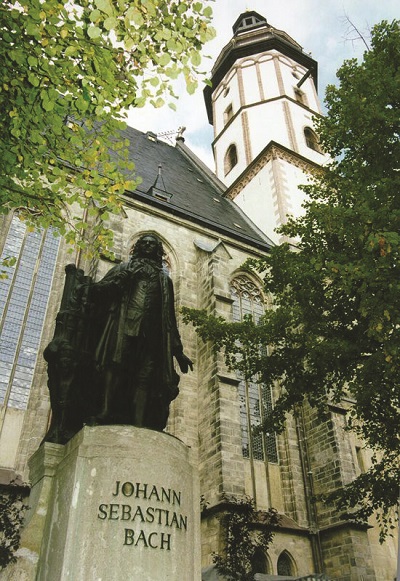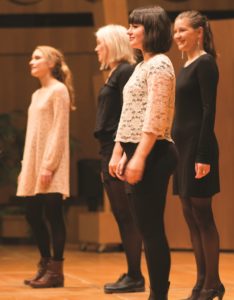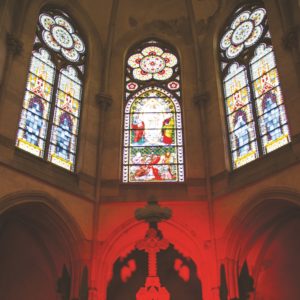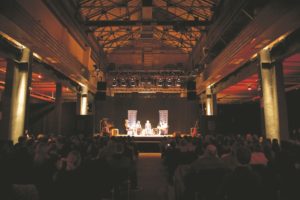Amarcord ist Gastgeber für Ensembles aus aller Welt
Von Graham Lack, Komponist und beratender Herausgeber des ICB
Bewaldete Hügel erstrecken sich entlang der Saale, wo dieser Nebenfluss der Elbe sich hinter Hof und der Universitätsstadt Jena entlang windet, bevor er Richtung Naumburg abbiegt, ab hier auf diesem historischen Wasserweg, der per Schleppkahn bis Halle befahrbar ist. Gerste und Zuckerrohr sollen hier bis Mitte des 20. Jahrhunderts so transportiert worden sein. Einige kleinere Städte im Bundesland Thüringen ziehen vorüber, ihre Namen sind leichter an den Fassaden verfallener Fabrikbauten in der Ferne lesbar als an den Anzeigetafeln der Bahnhöfe: Probstzella, Oberloquitz – unvermeidlich mit Unterloquitz direkt unterhalb der Linie – und das unaussprechliche Crölpa-Löbschütz, anscheinend mit Namenswurzeln sowohl im Deutschen als auch im Tschechischen. Bei Saalfeld sieht man die ehemalige ‘Schokoladenfabrik Stollwerck-Sprengel’. Der Zug, falls Sie sich fragen, ist ein ICE, ein technisch sehr seit weit entwickeltes Beispiel für Deutschlands Ingenieurswissenschaft, im Vergleich zu den alten Zügen etwas weniger gemütlich.
Unser Ziel war Leipzig, wo das 13. A Cappella Festival vom 20. bis 29. April stattfinden sollte. Die Stadt hat einige berühmte Bauten, das Gewandhaus mit seinem berühmtesten Kapellmeister Felix Mendelssohn Bartholdy, heute noch Heimat des Gewandhausorchesters, und die Thomaskirche, wo Johann Sebastian Bach von 1723 bis zu seinem Tod 1750 Kantor war.
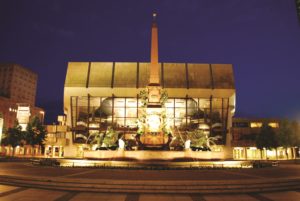
Der aktuelle Amtsinhaber ist seit seiner Wahl 1992 Christoph Biller, tatsächlich erst der 16. Thomaskantor. Auch wenn das Freitagabendkonzert nicht wirklich zum Festival gehörte, erschien es gut als Eröffnung einer Woche voll von Vokalmusik. Die Kirche war gerammelt voll und ich war einer der wenigen Glücklichen, die gerade eingelassen wurden, als die berühmten Thomaner, die 2012 ihr 800jähriges Bestehen feiern, Richtung Altar schritten. Wie in vielen Sakralbauten mit einer langen Musiktradition ist die Akustik so gut, dass sogar auf den hintersten Kirchenbänken die komplexe Polyphonie der doppelchörigen Motette “Der Geist hilft unsrer Schwachheit auf”, die Bach im Oktober 1729 für das Begräbnis des Leiters der Thomasschule, Johann Heinrich Ernesti, komponierte, vollkommen klar hörbar war.
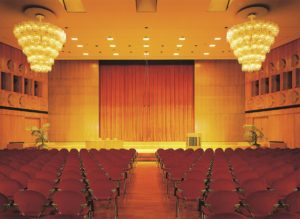
Das Eröffnungskonzert von A Cappella Leipzig mit den Lokalmatadoren der Stadt, Amarcord, findet manchmal in der Peterskirche, normalerweise aber im Mendelssohn-Saal des Gewandhauses statt. Dieses Ensemble gewann 1995 den 2. Preis in der Kategorie “Weltlich” beim Chorwettbewerb in Tolosa/Spanien und wurde 1999 beim Festival für Vokalmusik in Tampere mit einem geteilten 3. Preis zusammen mit dem finnischen Ensemble Tsakku ausgezeichnet.
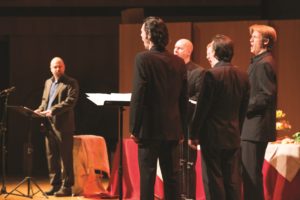
Das Programm gruppierte sich lose um Werke von Orlando di Lasso, die fünf Sänger von Amarcord hatten anscheinend intensiv geforscht und mitreissende Villanellen, kunstvolle Madrigale und höfische Chansons zu Tage gefördert. Die Insiderwitze der Renaissance waren nicht so verschieden von Witzen heutiger Musiker, und überforderte Sänger oder anzügliche Hinweise auf Nasen aller Formen und Größen sind heute genau so erheiternd wie damals.
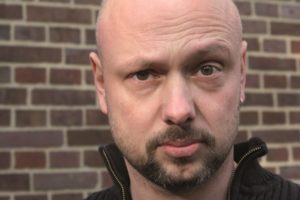
Andreas Rehschuh as Orlando di Lasso
Der nächste Abend gehörte VOCES8, sozusagen beste britische Tradition.


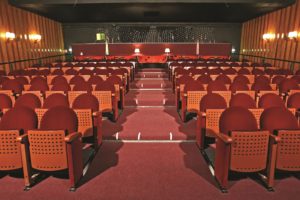
Der Veranstaltungsort war die Theater-Fabrik-Sachsen, ein Industriegebiet ausserhalb von Leipzig. Sachsens Vorstadttheater hat die Farben- und Lackwerke der Lacufa GmbH übernommen, einer Firma, die 1886 gegründet wurde und die DDR überlebte als Lackierwerk des allgegenwärtigen Trabants. Begeisterte Trabi-Sammler sind heute noch auf der Jagd nach Altbeständen der Farbe Delphingrau. Das Ensemble trat zum ersten Mal bei diesem Festival auf, und es war schade, dass die Techniker ein kleines Chaos verursachten, da sie irgendwie dachten, sie sängen mit Mikrophon, was bisher nicht zu ihrem Aufführungsethos gehörte. Ich hatte Florian Städtler am selben Tag getroffen, den “rasenden Reporter” und “Chefhörer” des Vokalblogs, der schon fast zu einer Basis für die Fans geworden war. Er sagte mir, wie begeistert er war, dieses “klassische Ensemble von Weltklasse” zu hören, und er betonte vor allem, dass ihr immer höher entwickeltes internationales Ansehen auf dem Konzept einer “akustischen a cappella Musik” beruhe. 2006 gewann VOCES8 beim Chorwettbewerb in Tolosa jeweils einen 1. Preis in den Kategorien “Weltlich” und “Geistlich”, nachdem sie im Vorjahr schon mit einem 1. Preis und dem Publikumspreis beim 44. Internationalen Chorwettbewerb ‘C.A. Seghizzi’ in Gorizia ausgezeichnet worden waren.
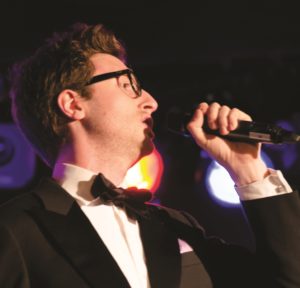
Ihr Programm ‘Aces High’ beinhaltet Soundtracks aus James Bond-Filmen und klassische Arrangements von Gershwin und Bernstein und beruht auf einer guten Mischung, die nur ohne Verstärkung erreicht werden kann. Für die Theaterfabrik Sachsen und die Festivalorganisation war es eine Premiere, und solche Problemchen passieren anscheinend. Und auch wenn die aus den 50er Jahren stammenden Plüschsessel im Theater VOCES8 zu einigen Änderungen in letzter Minute gezwungen hatten, erfüllten die Sänger ihre Mission mit Gelassenheit und Würde – als ihrer Majestät Geheimdienst natürlich.
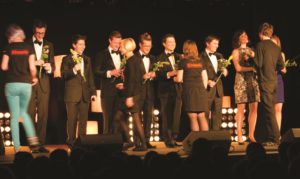
Die Montagszeitungen waren voll von Beifall für die Veranstaltungen des Wochenendes: Standing Ovations und zwei Zugaben am Ende des Konzerts von VOCES8, Lob für Amarcord und Andreas Rehschuh, den Theaterdirektor, der di Lasso verkörpert und dessen Briefe vorgelesen hatte. Es war eine Freude, in aller Ruhe im Café Riquet die lokale Presse durchzusehen. Diese Räume, errichtet 1908 von der Riquet Handelsgesellschaft, die 1745 vor allem gegründet worden war, um Waren wie Tee und Kakao von Afrika, China und dem Fernen Osten zu importieren, beherbergen jetzt ein Wiener Kaffeehaus, nachdem es dort früher ein Porzellangeschäft gegeben hatte. Das Gebäude war zur Zeit seiner Erstellung eines der modernsten in Leipzig und ist heute eines der wenigen erhaltenen Jugendstilgebäude in der Innenstadt.
Das Ensemble Heinavanker kommt aus Estland: sein Name bedeutet ‘Heuwagen’ auf Deutsch und bezieht sich auf ein Altarbild von Hieronymus Bosch. Der Künstler beschreibt eine grosse Wagenladung Heu, die durch eine Welt der Agonie und Gier rollt auf ihrem zerstörerischen Weg. Aber auf der Spitze des Heuballens ertönt schöne Musik. Erreicht sie den Albtraum, der unterhalb brodelt? Ihre Konzerte verbinden Elemente geistlicher Kunst mit Kultsymbolcharakter und der musikalischen Liturgie, wobei frühe Vokalpolyphonie das Zentrum ihrer Aufführung darstellt. Heinavanker führt auch frühe estnische Volksweisen auf, die die helle und die dunkle Seite des Lebens beschreiben. Eines ihrer bezeichnenden Lieder gehört zu den ältesten und beeindruckendsten Beispielen estnischer Kultur: ein vorchristliches Runenlied aus der Region Kadrina mit dem einfachen Namen Loomiselaul (Die Schöpfung). Es handelt von einem Vogel, der auf einer Weide sein Nest baut, Eier legt und dessen Brut schlüpft. Eines der Küken wird die Sonne, das zweite der Mond, das dritte ein Stern und das vierte ein Regenbogen. Solche Lieder entspringen womöglich einer jahrtausendealten Vokaltradition.

Seit 1988 unternahm das Ensemble viele Tourneen, unter anderem nach Finnland, Frankreich, Deutschland, Polen, Skandinavien und in die Schweiz, es nahm am Moskauer Festival für Alte Musik teil und am Aarhus Festival in Dänemark, war zur EXPO 2000 nach Hannover eingeladen und trat bei vielen wichtigen kulturellen Veranstaltungen auf wie dem MDR Musiksommer, dem Kultursommer Nordhessen, dem Schöneberger Musiksommer, der Internationalen A Cappella Woche Hannover, dem Hohenloher Kultursommer, bei den Uckermärkischen Musikwochen, den Heilbronner Kirchenmusiktagen, beim Musiksommer Mecklenburg-Vorpommern und bei den Sommermusiken Kloster Zinna. Schliesslich führte sie 2006 eine Tournee in die USA. Daneben machten sie viele Aufnahmen für Radio und Fernsehen.
Für ihren Auftritt in Leipzig in der Thomaskirche kombinierte Heinavanker Messsätze von Johannes Ockeghem (1417-1497) mit alten Runengesängen. Ihre Konzerte erkunden die Beziehung zwischen den feierlichen kontrapunktischen Meisterwerken der Renaissance, die den höfischen, religiösen und wissenschaftlichen Geist dieses Zeitalters widerspiegeln, und der meditativen, homophonen klösterlichen Musik des Mittelalters. Verglichen mit der zahlenmässig geringen Bevölkerung Estlands ist die hohe Anzahl von schon zu so früher Zeit herausragenden geistlichen Chorwerken erstaunlich, Werke mit starken Einflüssen von Volksmusik, deren Lebendigkeit vielleicht ein frühes religiöses Erwachen reflektiert. Der Meilenstein des Leipziger Programms “Aus Klöstern und Hütten” aber bleibt Ockeghem, dessen manchmal geheimnisvolle Musik eine aussergewöhnliche Balance erreicht zwischen verborgenen mathematischen Konstruktionen und offensichtlich spontanen Melodien. Seine Werke verlangen den Sängern so viel ab, dass die Aufführung als eine Mutprobe angesehen werden kann. Dem gegenüber standen Volksliedsätze wie Haned kadunud oder Loomine, letzteres auch noch sehr effektvoll choreografiert.
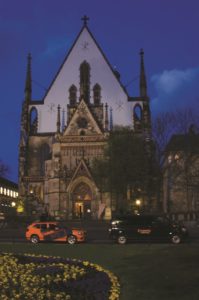
Beim Umherschlendern durch Leipzig am nächsten Tag versuchte ich Orte zu umgehen wie ‘Zills Tunnel’, wo die Touristen Schulter an Schulter sitzen, und die inzwischen nichts Individuelles mehr haben. Und ich wurde belohnt durch den Anblick der Alten Handelsbörse. Wer braucht noch die Wall Street? Die frühbarocke Alte Handelsbörse wurde 1687, am Ende des 30jährigen Krieges, fertig gestellt als ein repräsentativer Bau, in dem sich Händler aus aller Welt treffen konnten. Heutzutage finden hier wissenschaftliche Vorträge, Handelskonferenzen und private Empfänge statt, daneben aber auch viele literarische und musikalische Veranstaltungen.
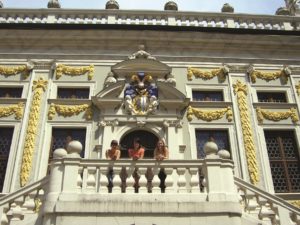
“Hurra, sie sind wieder da” freute sich das Festivalprogramm über LALÁ, einen der Gewinner des A Cappella Wettbewerbs Leipzig 2011, der in diesem Jahr wieder auftrat, diesmal in der Alten Handelsbörse. Diese vier charmanten Österreicher “können auch die Jüngsten gewinnen mit ihrer Liebe zum Gesang”, heisst es weiter im Text. Familienkonzerte sind ein Muss vieler Festivals geworden, und natürlich ist das eine sehr gute Idee. Sofort, wenn sie auf die Bühne kommen, heben LALÁ zu einer neckischen Fantasiereise ab – ihre bewegenden Geschichten werden auf den Flügeln des Gesanges transportiert und helfen jungen wie auch alten Zuhörern, greifbare Beziehung zur a cappella Kunst aufzubauen.
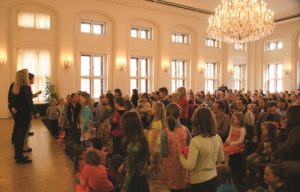
Das Markenzeichen des norwegischen Vokalensembles Nordic Voices besteht sicher aus einem breiten Spektrum von musikalischen Ausdrucksformen. Wie viele a cappella Ensembles heutzutage versuchen sie, alte und zeitgenössische Musik in ihren Programen zu verbinden. Das Motto ihres Konzerts in der Leipziger evangelisch-reformierten Kirche war einfach “Natur”. Einige der ausgewählten Werke waren stark onomatopoetisch, manch ein Naturphänomen eingefangen in der reinsten Schönheit des vokalen Klanges.
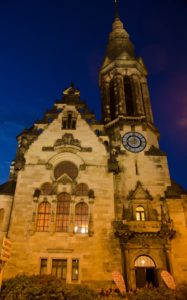
Johannes Ciconia (ca. 1370-1412) ist eine Schlüsselfigur der frühen Musikgeschichte und überspannt die Unterschiede zwischen der Musik des Mittelalters und der Renaissance. Geboren in Flandern, begab er sich im späten 14. Jahrhundert nach Italien, um in Rom und Padua zu arbeiten. Mit seinen charakteristischen lebendigen rhythmische Mustern im discantus und einer neuen reichen Klangfülle mit vielen Triolen ist sein harmonischer Stil einerseits ziemlich „modern“, legt andererseits aber Zeichen ab über das Aufkommen der Pythagoräischen Intonation. Bei den letzten Konzerten von Nordic Voices erklang eine Motette von Ciconia über Sonnenstrahlen, neben die ein neues Werk des norwegischen Komponisten Lasse Thoresen über dasselbe Thema gestellt wurde. Das sind musikhistorische Meilensteine innerhalb des Programms.
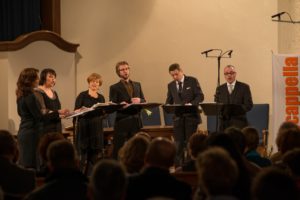

Kraja, die im Mendelssohn-Saal auftraten, ist eine der bemerkenswerteren Entdeckungen in der schwedischen Vokalmusikszene.
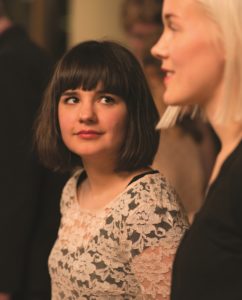
Vier junge Sänger werden zu einem einzigen Instrument, das die einzigartigen Klänge skandinavischer Volksmusik mit ihren hinreissenden Harmonien voll Innigkeit erklingen lässt. Kraja sind Lisa Lestander, Linnea Nilsson, Frida Johansson und Eva Lestander, alle aus Umeå in Nordschweden.
Sie fanden sich im Frühjahr 2002 für ein – wie sie damals dachten – einziges Konzert beim Umeå Volksmusikfestival zusammen. Ihr Repertoire beinhaltet traditionelle schwedische Lieder, Liebeslieder, Tänze, Hymnen und eigene Kompositionen, alles in massgeschneiderten Arrangements. Kraja bereiste Deutschland, Finnland, Norwegen, Dänemark, die Ukraine, Russland, Österreich und Estland. Im Juni 2008 brachten Sie das Album ‘Under himmelens fäste’ und im Jahr darauf ‘Skaren: Norrland III’ heraus mit Jonas Knutsson und Johan Norberg. Diese Mischung von traditionellen und neu komponierten Liedern verleiht ihren Programmen eine verblüffende Natürlichkeit.
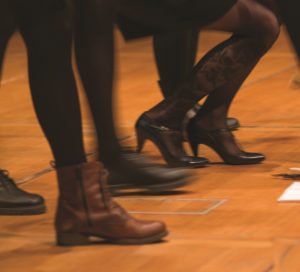
Zurück in der Theater-Fabrik-Sachsen, bewegte Cap Pela aus Mallorca mit ihrem live-Konzert das Publikum. Neben Adaptionen von Popsongs und Filmmusik hatten sie auch originale katalanische Sätze mitgebracht. Ihre Vokalakrobatik ist von höchster Kunst, und sie präsentierten eine mitreissende Bühnenshow, voll Freude und Hingabe.
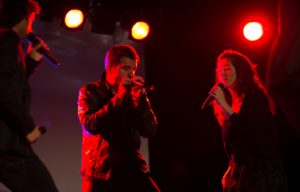
Die Peterskirche, in der der Klangkünstler Ambrose Field und der frühere Tenor des Hilliard Ensembles, John Potter, eine elektronische Entdeckungsreise zurück zur Renaissance unternahmen, ist nicht diejenige, die 1213 als Augustinerkapelle im früheren Dorf St. Petri gegründet wurde.
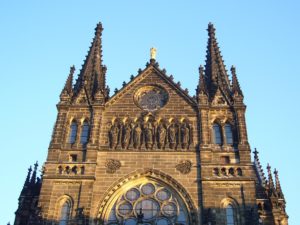
Das Originalgebäude wurde 1507 als Hallenkirche wieder aufgebaut, 1539 von der Stadt übernommen und für weltliche Bestimmungen verwandt, bevor sie 1712 renoviert und für Gottesdienste der Lutheraner geöffnet wurde. Sie wurde 1886 durch eine neue Peterskirche am Schletterplatz ersetzt und später wieder abgerissen.
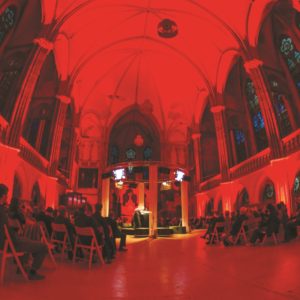
In dem heutigen neogotischen Gebäude sang Potter Fragmente von Vokalstimmen Guillaume Dufays. Field multiplizierte und modifizierte das digital zu neuem musikalischem Material. Das Ergebnis ist ein zeitgenössischer Klang, der irgendwie die Inhalte der franko-flämischen Vokalpolyphonie des 15. Jahrhunderts bewahrt. Ein Multimedia-Event, Videosequenzen, die Michael Lynch ausgewählt hatte für diese Zusammenarbeit, gaben dem Abend einen meditativen Touch.
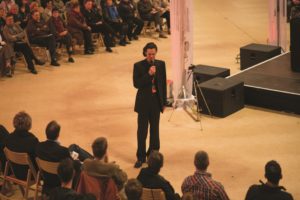

Man sucht vergebens nach einem grossen Bus, mit dem Audiofeels zum Auftritt gekommen wäre, auch wenn sie es immer schaffen, Schlagzeug, E-Gitarre, Kontrabass, eine Trompete und ein ganzes Streichorchester dabei zu haben. Doch sie produzieren den Klang dieser Instrumente mit den eigenen Stimmen. Jeder Sänger hat ziemlich bemerkenswerte Fähigkeiten, wodurch die Gruppe erfolgreichen Pop-Hits von Michael Jackson, den Bee Gees, Quincy Jones oder den Red Hot Chili Peppers neues Leben einhauchen. Diese polnischen Newcomers machen vor nichts Halt und gewannen Jury und Publikum beim A Cappella Wettbewerb im vergangenen Jahr in Leipzig. Dieses Jahr rockten sie im Werk-2. Apropos Veranstaltungsort: Werk-2 wurde 1848 als Gasometer-Fabrik erbaut, 1952 aufgelöst, und zu DDR-Zeiten wurde dort Mechanik produziert zum Testen von Maschinen; 1992, nach der Wiedervereinigung, wurde es zum Kunstzentrum, bevor es 1996 von der Stadt Leipzig übernommen und zu einem sozio-kulturellen Zentrum bestimmt wurde. Die Gebäude wurden 2004 vollkommen renoviert von Augustin & Imkamp. Ein Jahr später fand dort der erste “Alternative Weihnachtsmarkt” statt, der sich seitdem grosser Popularität erfreut.
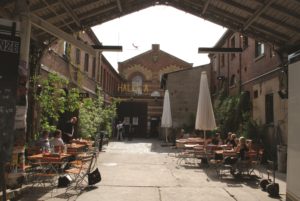
Die Schaubühne Lindenfels, der letzte Veranstaltungsort des Festivals, stammt aus dem Jahr 1876 und war ursprünglich ein Tanzsaal. Im Jahr 1900 wurde er wiedereröffnet als die ‘Gesellschaftshalle zu Lindenau’, 1904 unter neuer Leitung umbenannt in ‘Schloss Lindenfels’. Mit Beginn des Kino-Zeitalters wurden ab 1913 dort Filme gezeigt. Nach vielen Veränderungen wurde das Haus 1949 zum ‘Lichtspieltheater Lindenfels’, 1987 gab es einen verheerenden Heizungsbrand, und 1993 wurde es übernommen von einer neuen Gesellschaft der Freunde zur Erhaltung des Gebäudes, die es 1994 unter dem heutigen Namen wieder eröffnete. 2002 ging der Verein Bankrott, und 2005 übernahm das Haus ein neu gegründeter ‘Verein für Internationale Theatererkundungen’ mithilfe des Kulturbüros der Stadt Leipzig.
Das Festivalprogramm kündigte an: “Meine Damen und Herren, dieser Abend wird heiss! Vier Männer, vier Mikrophone, keine Instrumente: das ist das unmissverständliche Rezept von Cadence.”
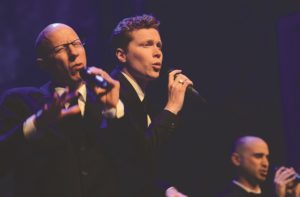
jazz as we know it
Und tatsächlich, einige close harmonies [Harmonien in enger Lage, Anm. der Übers.], gekonnte Imitationen von Instrumenten und der flotte Humor dieser vier charismatischen Kanadier versetzten uns alle von der Schaubühne Lindenfels in einen amerikanischen Jazzclub der 40er Jahre. Einige raffinierte Interpretationen von Jazzklassikern wurden sehr lebendig und so zu ihrer eigenen Musik.
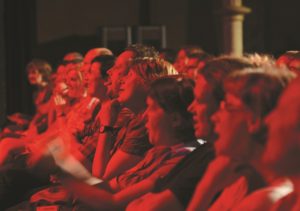
Im Laufe der Jahre wurde das A Cappella Festival Leipzig etwas wie das Mekka der Fans von Vokalmusik. Die Sänger von Amarcord werden auf Trab gehalten, arme Kerle, und haben ein Auge auf alles, was ihre Gäste benötigen könnten, auch wenn das Gefühl aufkommen kann, dass sie fast keine Zeit mehr haben, auf sich selbst zu achten. Man vermisst auch einen zentralen Punkt, wo Publikum und Künstler sich am Abend treffen könnten, aber bei einer grösseren Stadt mit vielen Theatern, Konzertsälen, Kirchen und anderweitigen Veranstaltungsorten liegt das in der Natur der Sache. Auch eine Tendenz, dass immer mehr Ensembles mit akustischer Verstärkung oder sogar mit Mikrophonen in der Hand statt ohne arbeiten, ist mehr ein Symptom einer gewissen Krankheit des Genres. Und ein Festival kann mehr dafür schwerlich verantwortlich machen. Der Veranstaltungsort und seine Klangqualität spielen eine sehr bestimmende Rolle, aber es gibt mindestens eine sehr bekannte Gruppe, die nun seit mehreren Jahrzehnten immer noch nur akustische a cappella Musik macht mit ganz, ganz seltenen Ausnahmen, wenn sie wirklich gar keine andere Wahl haben.

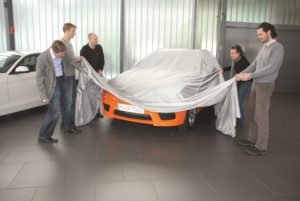
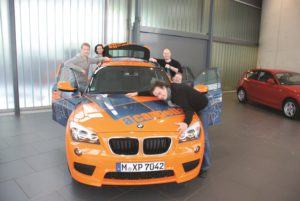
Ein anderes exzellentes Leipziger Ensemble, Calmus, ist seit nunmehr fast 10 Jahren nicht mehr bei A Cappella aufgetreten. Das ist etwas merkwürdig, wenn man bedenkt, dass sie beim Festival 2003 einen Spezialpreis für Künstlerische Entwicklung erhielten und 2005 beim berühmten Wettbewerb in Tolosa mit ersten Preisen sowohl in der Kategorie “Geistlich” als auch in der Kategorie “Weltlich“ ausgezeichnet wurden.
Aber mein Zug wartete, diesmal ohne Umsteigen in Naumburg. Das einst grosse, nun jedoch heruntergekommene Hotel Astoria wurde kleiner und kleiner.(Wäre es nicht an der Zeit, dass die Stadt einen Investor fände um es zu renovieren, anstatt noch mehr scheussliche, postmoderne Glas- und Stahlkuben gegenüber des Hauptbahnhofs zu errichten?) Aber ich wurde schnell zufriedener, glücklich, nur eine fast farblose Landschaft zu betrachten, abgesehen von vereinzelten gelben Rapsfeldern, die gerade begannen zu blühen. Als wir das Gebiet der Saale-Unstrut passierten mit dem nördlichsten Weingebiet Europas – deutlich jenseits des 51. Längengrads – machte die frühe Frühlingssonne vergebens einen Versuch, die Erde zu erwärmen. Die geografischen Hauptmerkmale sind hier verwitterter Kalkstein und Sandsteingebirge, Schiefergebirge und kupferrote Erde. Die Gegend bekommt viel Sonne aber wenig Regen. Mit nur ca. 500 ml Niederschlag pro Jahr ist Saale-Unstrut eine der trockensten Weinregionen Deutschlands. “Polare” Winter bedeuten oft Temperaturen von weniger als 20 Grad minus. Für Wein heisst das Frost. Aber ich war in einer kleinen ‘Vinothek’ in der Stadt gut beraten worden, und nun hatte ich ein paar Flaschen eines ausgezeichneten Rieslings im Gepäck vom ‘Weingut Schloss Proschwitz Prinz zur Lippe’. Zum Wohl!
All photos: Holger Schneider & Uwe Schürmann © DREIECK MARKETING, except Andreas Rehschuh (© HL Böhme), Gewandhaus, Werk2, Alte Handelsbörse & Peterskirche (© LTM Schmidt), Mendelssohn-Saal (© Jörg Clemen), Hainavankar (© Hainavankar) & Theaterfabrik Sachsen (© Theaterfabrik Sachsen).
 Graham Lack studierte Komposition und Musikwissenschaft am Goldsmiths’ College und an King’s College, University of London (BMus Hons, MMus), Musikerziehung an der Universität Chichester (Staatsexamen), und zog 1982 nach Deutschland (Technische Universität Berlin, Dissertation). Dozent für Musik an der Universität Maryland bis 1992. Beiträge für Groves Dictionary und Tempo. Kompositionsaufträge: Sanctus (Queens’ College Cambridge), Two Madrigals for High Summer, Hermes of the Ways (Akademiska Damkören Lyran), Estraines, (The King’s Singers, eingespielt bei Signum), Four Lullabies (VOCES8, Signum), Petersiliensommer (Münchener Philharmonischer Chor). The Legend of Saint Wite war 2008 Gewinner eines BBC Wettbewerbs. REFUGIUM wurde vom Trinity Boys Choir London 2009 uraufgeführt und 2012 auf CD veröffentlicht. Zu den jüngsten Werken gehören Wondrous Machine für den Multipercussionisten Martin Grubinger, Nine Moons Dark für großes Orchester. Uraufführungen 2010/11: Streichtrio The Pencil of Nature (musica viva, München), A Sphere of Ether (Young Voices of Colorado), The Angel of the East. Uraufführungen 2011/12: The Windhover (Solovioline und Orchester) für Benjamin Schmid. Korrespondierendes Mitglied des Instituts für Advanced Musical Studies King’s College London, regelmäßiger Teilnehmer an ACDA-Konferenzen. Verlegt bei: Musikverlag Hayo, Cantus Quercus Press, Schott, Josef Preissler, Tomi Berg. Email: graham.lack@t-online.de
Graham Lack studierte Komposition und Musikwissenschaft am Goldsmiths’ College und an King’s College, University of London (BMus Hons, MMus), Musikerziehung an der Universität Chichester (Staatsexamen), und zog 1982 nach Deutschland (Technische Universität Berlin, Dissertation). Dozent für Musik an der Universität Maryland bis 1992. Beiträge für Groves Dictionary und Tempo. Kompositionsaufträge: Sanctus (Queens’ College Cambridge), Two Madrigals for High Summer, Hermes of the Ways (Akademiska Damkören Lyran), Estraines, (The King’s Singers, eingespielt bei Signum), Four Lullabies (VOCES8, Signum), Petersiliensommer (Münchener Philharmonischer Chor). The Legend of Saint Wite war 2008 Gewinner eines BBC Wettbewerbs. REFUGIUM wurde vom Trinity Boys Choir London 2009 uraufgeführt und 2012 auf CD veröffentlicht. Zu den jüngsten Werken gehören Wondrous Machine für den Multipercussionisten Martin Grubinger, Nine Moons Dark für großes Orchester. Uraufführungen 2010/11: Streichtrio The Pencil of Nature (musica viva, München), A Sphere of Ether (Young Voices of Colorado), The Angel of the East. Uraufführungen 2011/12: The Windhover (Solovioline und Orchester) für Benjamin Schmid. Korrespondierendes Mitglied des Instituts für Advanced Musical Studies King’s College London, regelmäßiger Teilnehmer an ACDA-Konferenzen. Verlegt bei: Musikverlag Hayo, Cantus Quercus Press, Schott, Josef Preissler, Tomi Berg. Email: graham.lack@t-online.de
Übersetzt von Martina Pratsch, Schweiz

